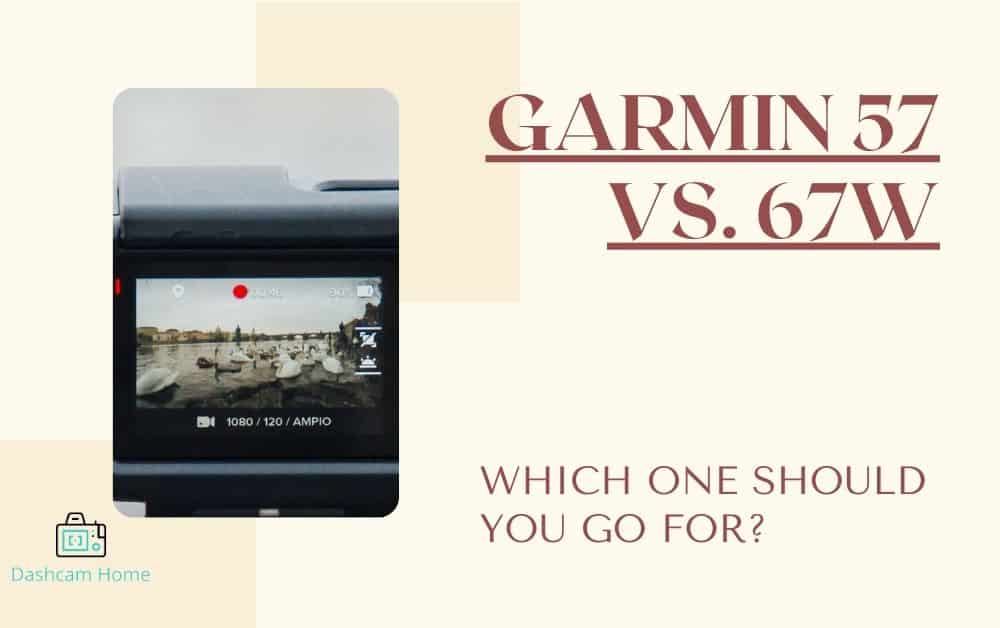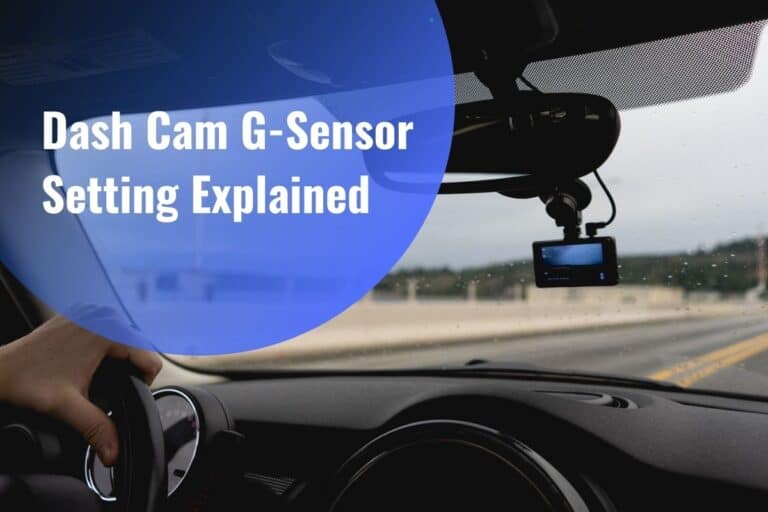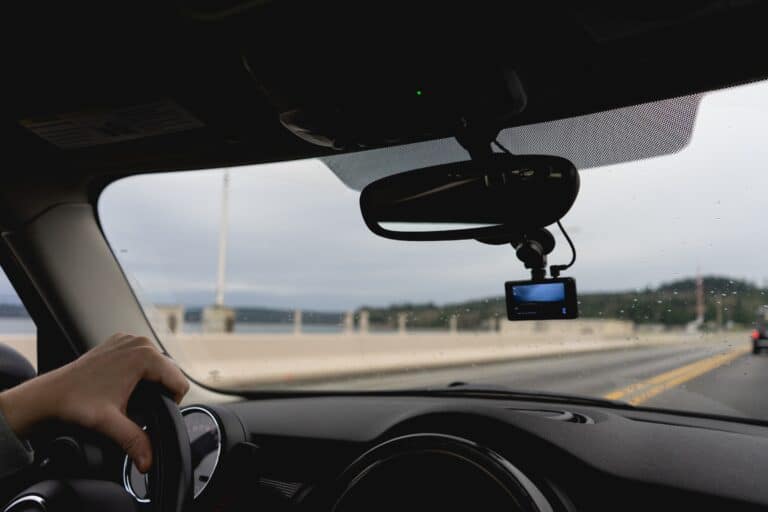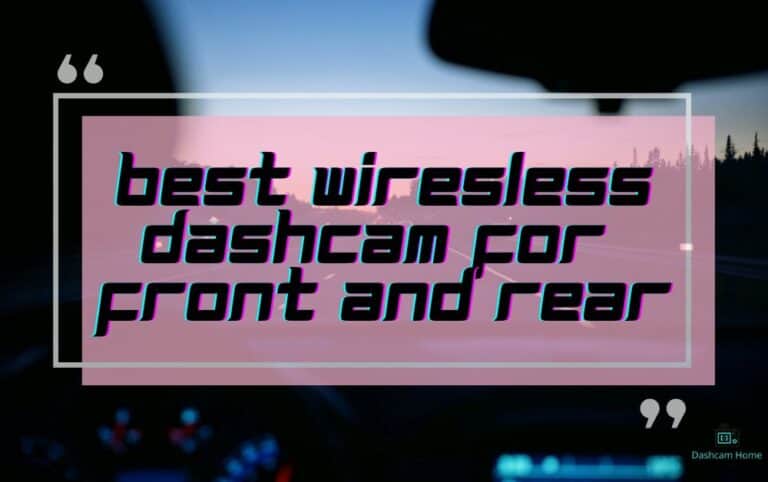Garmin 57 Vs. 67W: Which Dash Cam Is Better For You?
Garmin is a well-known brand offering dash cams for vehicle owners, helping people capture still images and videos of their surroundings while driving or when the vehicle is in parking mode. They have an array of dash cams, advanced software, and high-quality video recording.
The two most recent models include Garmin 57 and Garmin 67W. How are they different? Let’s find out.
If you buy through our affiliate links, we’ll earn a small commission at no extra cost to you. Read more.

- Extra-wide 180-degree lens
- Saved videos automatically upload Vault
- The Parking Guard
- Live View monitoring
- Driver alerts
- Durable design
Garmin 57 Vs. 67W: Which One Is Better?
Both these dash cams are mid-range options with similar performance and features. The only major difference between the Garmin 57 and 67W is that the 67W model has 180-degree FOV while the 57 comes with a 140-degree lens.
Garmin 57 and 67W are both good choices for people who need clear video quality, a compact design, and a built-in GPS, along with 1440p video recording.
But where Garmin 67W stands out is that it has a 180-degree lens for wider video capturing and still images. So, this one is more premium, hence the high price tag. Garmin 67W is a better dash cam with clear video output if you can afford it.
Let’s check out the in-depth feature comparison to learn more about it.
Design
Garmin 57 has a box-shaped, which gives it a portable and compact design. The dash cam has a lens on the front side, while the settings-related buttons and a two-inch display are installed on the backside. It can be installed on the windscreen, given the magnetic mount. The best thing is that the text on the display screen is large enough to ensure easier readability.
There is a special slot for installing the microSD card (it comes with a 16GB card), and there are vents for releasing the heat—the prevention of overheating promises longer life.
On the other hand, Garmin 67W is another dash cam with a similar shape and four control buttons on the display. There is a button for saving the videos manually. On the side, there is a memory card slot and micro USB port for connecting it to power. It also has a magnetic mounting system, making it extremely easy to set up.
Video Quality
To begin with, both these cameras are integrated with a 3.7MP camera. But Garmin 57 has a 140-degree diagonal field of view, while Garmin 67W has a 180-degree diagonal field of view. The resolution is the same in Garmin 67W, but the 180-degree lens makes it possible to capture footage on both ends of the vehicle.
In fact, the only major difference to remember when choosing Garmin 57 Vs. 67W is the field of view.
The 67W dash cam has a wider field of view compared to the 140-degree FOV in Garmin 57. Both of them have a high dynamic range, which reduces the highlights and improves shadows to ensure all the details are clear.
The night-vision feature helps capture a clear and sharp picture – it is automatically turned on when you drive the vehicle in low-light conditions. You can check the footage on display, and the files will be uploaded to the vault storage system when connected to Wi-Fi.
Accessibility
Garmin 57 and Garmin 67W are integrated with G-sensors. They are responsible for sensing collisions, so the video recording begins immediately. You can manually save a specific portion of the captured video and save it on the storage system. In addition, there is a voice control feature to pause, resume, save, or delete videos with voice commands.
It also has a voice control feature and works fine with different languages. These languages include Swedish, Spanish, German, Italian, and French.
GPS
Both these dashcams are designed with the GPS feature. The GPS feature saves the vehicle’s speed and locational data. It’s a great feature to protect yourself in an accident, as the evidence will show that you didn’t exceed the speed limit. It’s also great evidence to claim insurance money if your vehicle gets damaged.
Security & Safety
Both Garmin 67W and Garmin 57 are integrated with the driver assistance feature, which means the camera will send an instant alert when you drive out of the lane and if there is a high probability of collision. Moreover, if you don’t move at a traffic signal when the light turns green, and the other cars do, you will get an audio message to drive the vehicle.
Battery
Garmin 57 and 67W are integrated with built-in lithium-ion batteries with thirty minutes of battery time. It is enough for emergencies, so the video footage doesn’t get interrupted if the power is interrupted or cut off. You can use the vehicle’s battery, and if its power is cut off for some time, it will kick in.
Software
Garmin 57 and 67W can be used with four buttons. Some of its features are also controllable through voice commands. The camera is usable with the smartphone app that’s available for Android as well as iOS smartphones. The users can access the live feed to check the videos being captured, making it easier to adjust the angle. Also, the videos can be synced to the app when connected to Wi-Fi.
Garmin’s app allows users to enable or disable the extra features. As far as the app’s interface is concerned, it could be more beginner-friendly, but it is enough to provide live footage. So, the app is available, but can be initially challenging to navigate.
The Verdict: Garmin 57 Vs. 67W
On a concluding note, both these dash cams are nice. Still, Garmin 67W offers a wider angle and has a better quality of videos and images. However, it comes at a high price.
On the other hand, Garmin 57 is recommended for people who need something decent and affordable because 67W is an upgrade with wider FOV. Overall, there are various similarities in the design, battery, and mounting method.
If you’re on the fence, check our article on what to look for in a dashcam to understand the various features.









